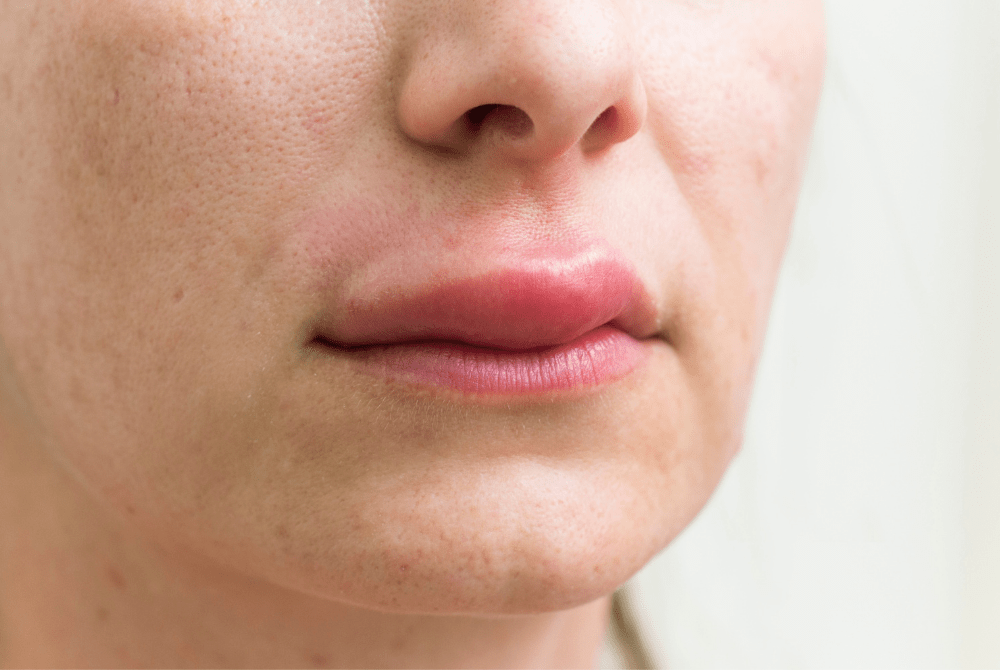Angioedema, a potentially debilitating condition characterised by localised swelling of deeper layers of the skin, can significantly impact one’s quality of life. Whether triggered by an allergic reaction, an inherited genetic disorder, or other underlying medical conditions, effectively managing and angioedema treatment is crucial in alleviating symptoms and preventing potential complications. From medications to lifestyle adjustments, we will delve into various strategies that can make a significant difference in controlling angioedema symptoms and empowering you to lead a more fulfilling and comfortable life.
Symptoms of Angioedema
Angioedema is characterised by the sudden and often painful swelling of deeper layers of the skin, typically occurring in areas like the face, lips, tongue, throat, and sometimes the hands and feet. Symptoms of angioedema can vary in severity and may include:
- Swelling – The hallmark symptom of angioedema is swelling. It often appears suddenly and can affect different areas of the body. Swelling can be mild to severe and may cause disfigurement or discomfort.
- Facial Swelling – Angioedema commonly affects the face, leading to swelling of the lips, cheeks, eyelids, and around the eyes. This can cause a pronounced change in facial appearance.
- Swollen Lips and Tongue – The lips and tongue are frequently involved in angioedema, and their swelling can be particularly concerning, as it can lead to difficulty speaking, eating, and breathing.
- Throat Swelling – In some cases, angioedema can cause swelling in the throat, which can be a medical emergency. Throat swelling may lead to difficulty swallowing, breathing difficulties, and a feeling of tightness in the throat.
- Pain and Discomfort – Swelling in angioedema can be painful or uncomfortable, especially when it affects joints or areas with a high concentration of nerve endings.
- Itching – Many individuals with angioedema experience itching in the affected areas before or during swelling. This itching can contribute to discomfort.
- Warmth and Redness – The skin over the swollen area may become warm to the touch and appear red or flushed.
- Abdominal Symptoms – In some cases, angioedema can affect the gastrointestinal tract, leading to abdominal pain, cramping, and nausea.
- Swollen Hands and Feet – Angioedema can occasionally affect the hands and feet, causing swelling, discomfort, and difficulty using the affected extremities.
It’s important to note that angioedema can occur independently or in conjunction with urticaria (hives). When angioedema and hives occur together, it is called chronic urticaria with angioedema. Acute angioedema typically resolves within a few days, but chronic forms may persist for weeks or months.
Various factors, including allergies, medications, underlying medical conditions, and genetic factors can cause angioedema. If you or someone you know experiences sudden and severe swelling, especially in the throat or with breathing difficulties, seek immediate medical attention, as this could be a life-threatening emergency. A healthcare provider can diagnose the underlying cause of angioedema and recommend appropriate treatment options, including antihistamines, corticosteroids, or medications that target specific pathways involved in the condition.
Modern Approaches to Angioedema Treatment
Significant advancements have been made in the modern approaches to angioedema treatment, offering individuals various options to manage this condition effectively. One of the most commonly used treatments is antihistamines, which help alleviate symptoms by blocking the effects of histamine, a chemical released during an allergic reaction that causes swelling. Antihistamines are over-the-counter, but prescription-strength versions may be required in severe cases.
In addition to antihistamines, another modern approach to angioedema treatment is corticosteroids. These medications reduce inflammation and can be particularly helpful for individuals with chronic angioedema or those experiencing recurrent episodes. Corticosteroids are available in different forms, including tablets, injections, or creams, depending on the severity and location of the swelling.
Several newer treatment options for individuals with hereditary angioedema have emerged in recent years. One such option is using C1 inhibitor concentrates, a medication that helps restore the deficient or dysfunctional protein in the body and prevent episodes of swelling. Several other targeted therapies are also being developed, including drugs that block specific enzymes involved in producing inflammatory chemicals, providing hope for more effective and personalised treatment options. Overall, with the advancements in modern approaches to angioedema treatment, individuals now have various options to help manage their condition and improve their quality of life.
Resources and Support for Angioedema Patients
If you are living with angioedema, you must know that resources and support are available to help you manage this condition. One of the first steps towards finding information and assistance is contacting your healthcare provider. They can provide information about available treatment options and help tailor a management plan that suits your specific needs. They may also refer you to specialists such as allergists, immunologists, or dermatologists with expertise in diagnosing and treating angioedema.
In addition to medical professionals, support groups and patient advocacy organisations can provide valuable resources and support. Connecting with others who are experiencing similar challenges can be comforting and empowering. These groups often offer educational materials, online forums, and opportunities to participate in research studies, which can contribute to advancements in understanding and treating angioedema. By joining these communities, you can gain valuable insights and guidance from others who have navigated the path of managing angioedema.
Whether through healthcare professionals, patient advocacy organisations, or support groups, accessing resources and support is crucial for individuals with angioedema. With the correct information, guidance, and assistance, you can take control of your condition and work towards effectively managing and minimizing the impact of angioedema on your daily life.
